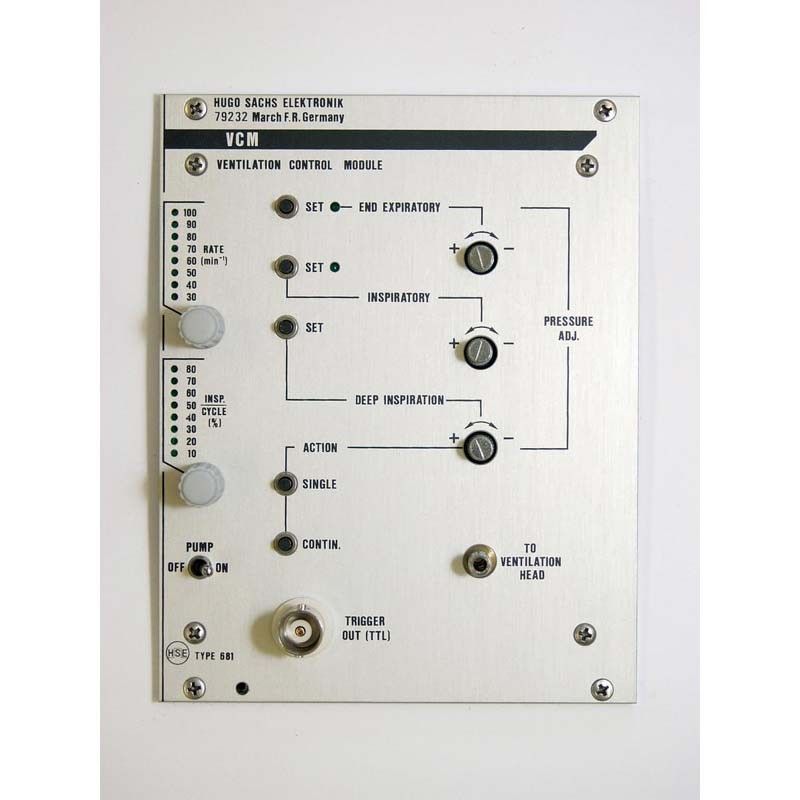Ventilation Options for IPL-4
For a functional IPL-4 unit the core system requires a suitable ventilation system. For only positive ventilation the Small Animal Ventilator, Type 683 with a 30 ml cylinder can be used. If positive and sub-atmospheric ventilation is needed, a special Ventilation Control Module (VCM-4) is required.
For a functional unit the core system requires a suitable ventilation system. For only positive ventilation a mouse ventilator can be used. If positive and sub-atmospheric pressure ventilation are required, the Ventilation Control Module must be purchased.
For a working unit, the core system requires the addition of a selection of either the VCMR-4 or PPV-4 in combination with the PPV-683 Small Animal Ventilator.
Negative Pressure Ventilation
- VCM modules control the ventilation of the isolated lung preparation. They allow for the physiological negative pressure ventilation of the lung and positive ventilation during preparation.
- 30 to 100 breaths per minute
- I:E ratio can be set between 10 and 90% in 10% steps
- End-inspiratory, end-expiratory, sigh and negative pressures can be individually set
- The TCM Timer Counter Module allows periodic sigh (hyperinflation) breaths to minimize edema formation
|
Negative Pressure Ventilation Controller |
|
| 73-1755 | PLUGSYS VCM4-R Ventilation Control Module with Regulator |
| 73-1750 | PLUGSYS TCM Time Counter Module |
* Negative pressure ventilation with a pressure regulator requires a pressurized gas supply from a tank or house air in the range of 2 to 8 bar (29 to 116 PSI) and the Pressure-Free Gas Supply Adapter (73-4309), purchased separately.
Positive Pressure Ventilation (PPV-4)
Choose the PPV-4 option when only positive pressure ventilation is desired. This adapter is used to connect to the small animal ventilator, Type 683.
|
Positive Pressure Ventilation for IPL-4 |
|
| 73-4312 | Adapter for Positive Pressure Ventilation on IPL-4 |
Other Components
Small Animal Ventilator, Type 683
The Model 683 Small Animal Ventilator comes standard with two piston and cylinder assemblies. For the IPL-4, the large piston must be installed. This allows tidal volumes to be set from 3.0 to 30 cc in 0.3 cc increments. By setting the cylinder stroke between gradations it is possible to achieve finer resolution in tidal volume settings. Respiratory rate can be set from 18 to 150 strokes per minute. Volume and rate settings can be adjusted while the ventilator is running.
Aerosol Nebulizer Kit (73-3433)
- Low particle sizes (100% of the particles are below 10 µm)
- No Solution Warming Required
- Recommended for Nebulizing Drugs Sensitive to Ultrasonics
- Aerosol is Automatically Transported by Compressed Air at a Pressure of 1.5 bar (22 PSI)
- Aerosol nebulizer with multi-gas adapter kit (73-3433)
- Pressure-free gas supply adapter for alternative gas supply for IPL-1 (73-2789)
- Aerosol filter
- Mounting hardware
PULMODYN Data Acquisition Software
Online evaluation of a wide range of signals and classical respiration parameters.

